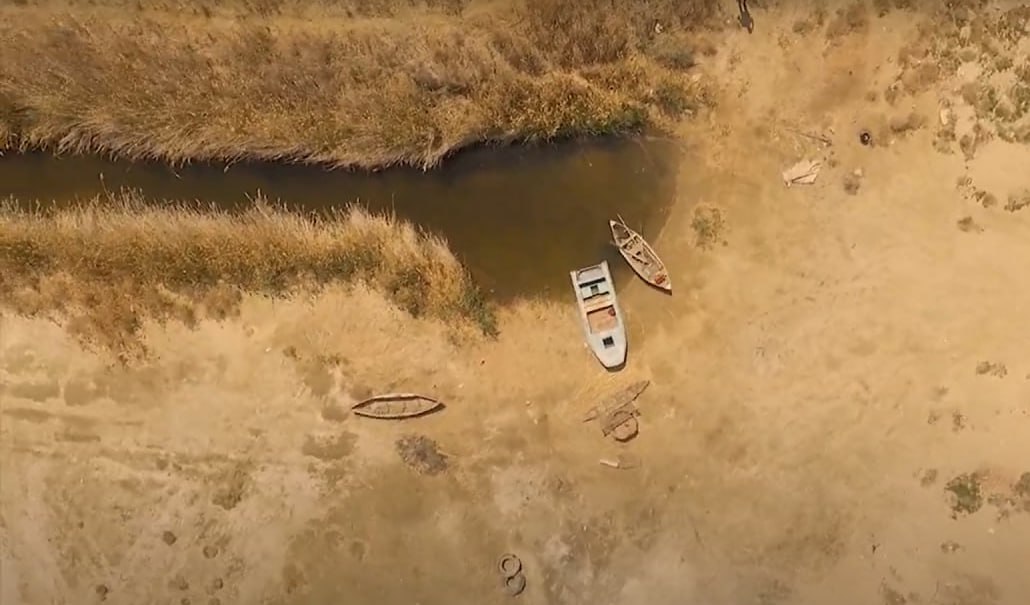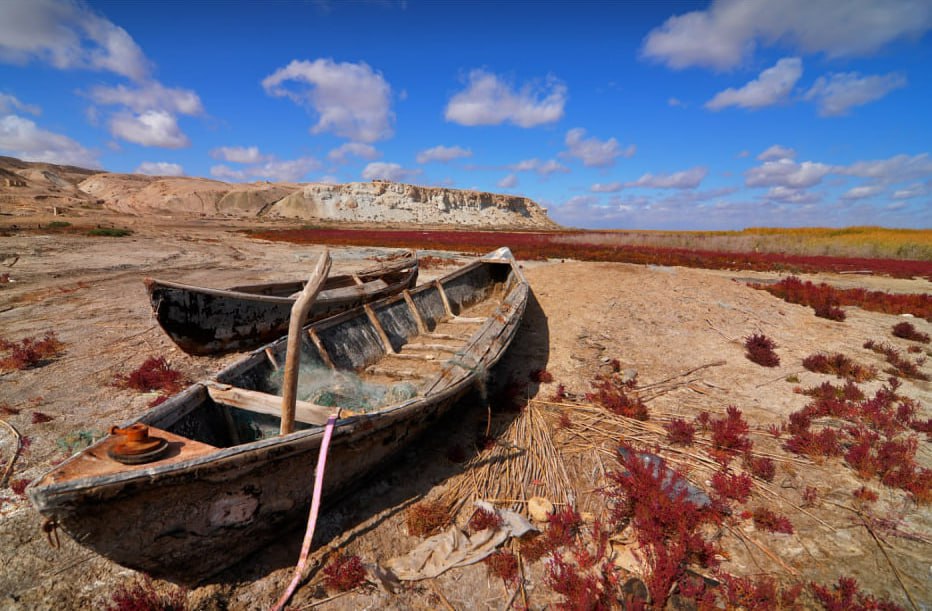 The abandoned village of Urga is located on the picturesque shore of Lake Sudochie, at the eastern cliff of the Ustyurt plateau, at the majestic Cape Urga. More than half a century ago, the cape was part of the lake.
The abandoned village of Urga is located on the picturesque shore of Lake Sudochie, at the eastern cliff of the Ustyurt plateau, at the majestic Cape Urga. More than half a century ago, the cape was part of the lake.
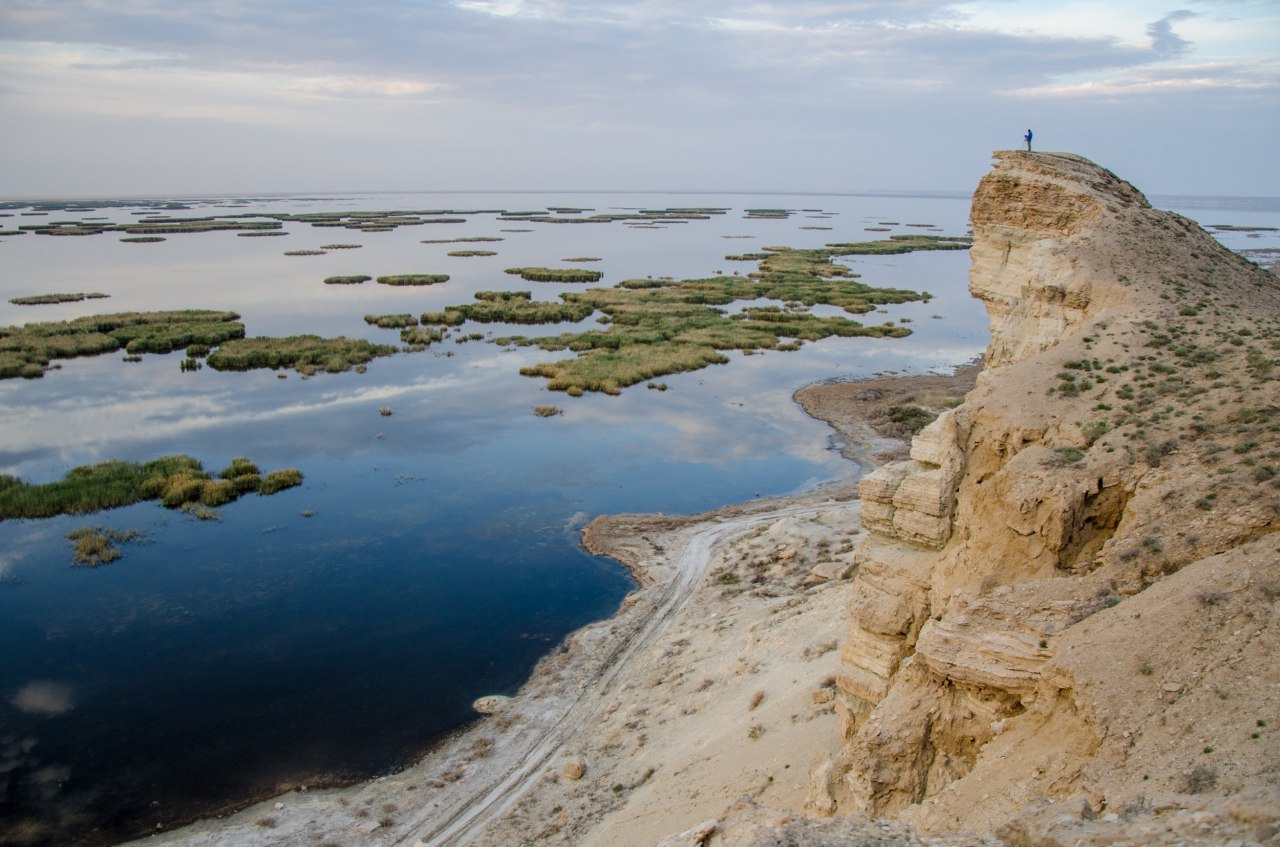 (photo by Ernest Kurtveliev)
(photo by Ernest Kurtveliev)
At its top, there are ruins of an ancient settlement remain, a citadel and a watchtower that protected these lands from uninvited guests.
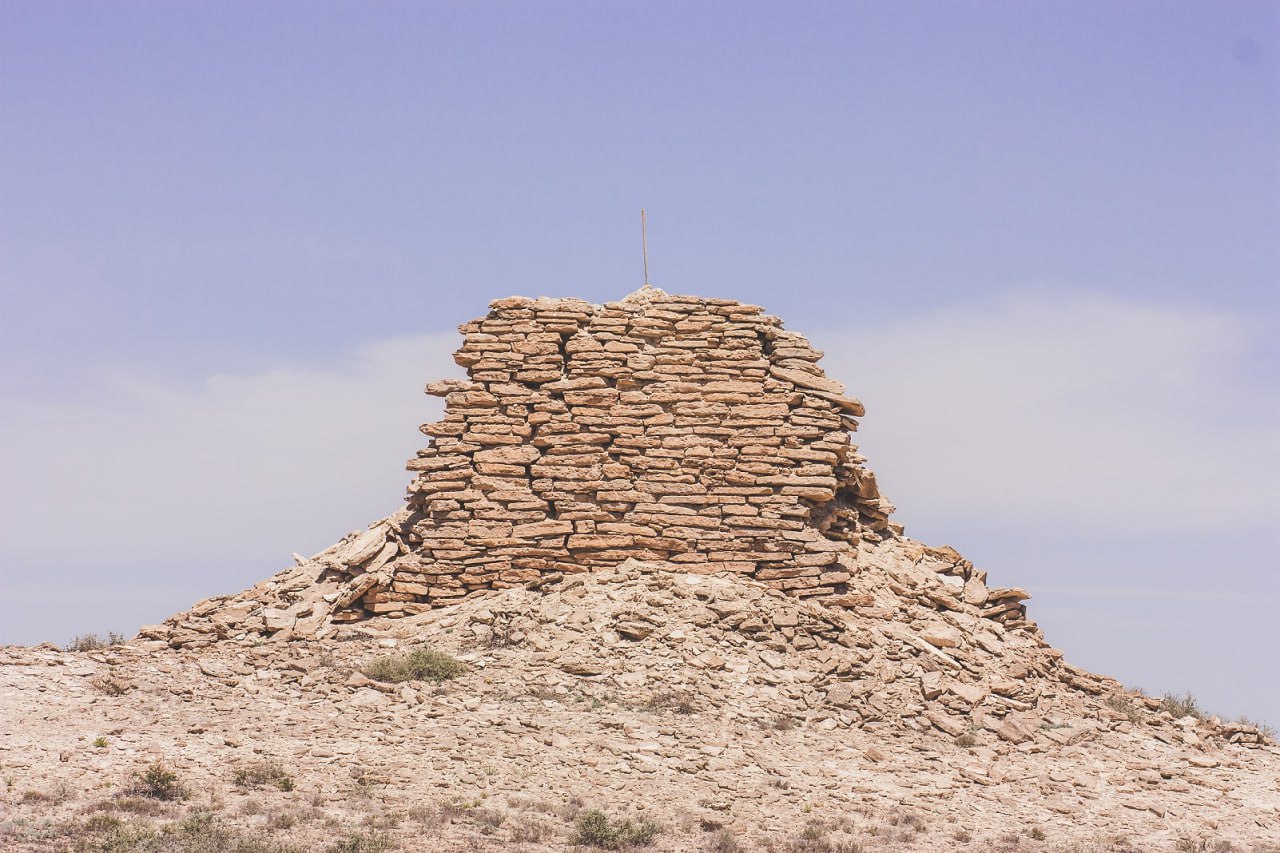 Nearby the ruins, you can see an old Orthodox cemetery, as well as earlier burials. Archaeological excavations indicate that people lived in the area of the village during the 9th-10th centuries AD.
Nearby the ruins, you can see an old Orthodox cemetery, as well as earlier burials. Archaeological excavations indicate that people lived in the area of the village during the 9th-10th centuries AD.
Before the ecological disaster of the Aral Sea, Lake Sudochie was a real oasis in the middle of the desert. There was an atmosphere of prosperity here: a fishing port was functioning, and fish production was flourishing. Lake Sudochie attracted tourists with its beauty, offering opportunities to relax, swim in its waters, fish and enjoy delicious fish.
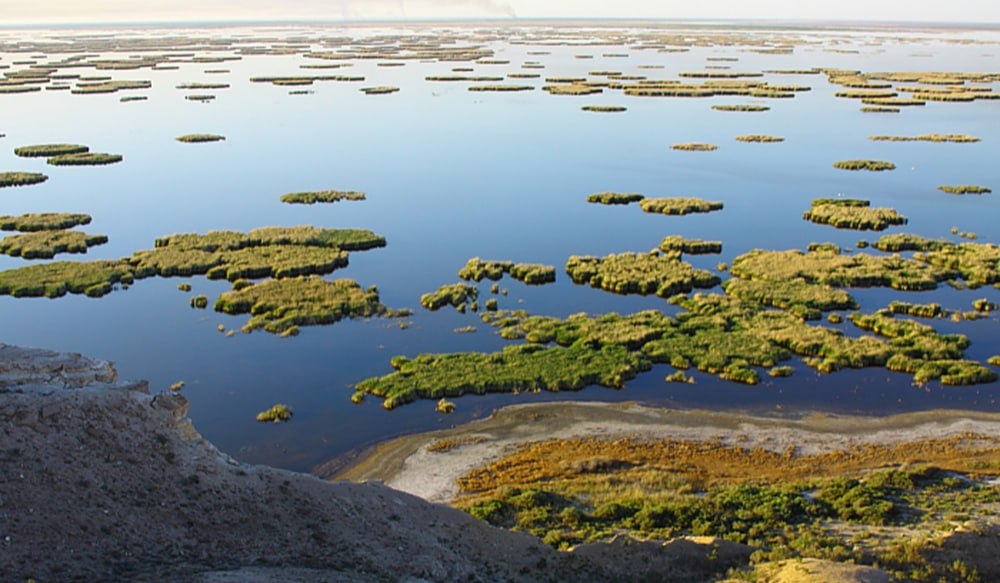 Urga became a lively fishing village in the late 19th century thanks to the Ural Cossacks. In 1875-1876, thousands of them were deported to the shores of the Aral Sea for not supporting Russia's campaign against the Khiva Khanate. Some of them, who specialized in fishing, settled in Urga and began interacting with the local Kazakh and Karakalpak population.
Urga became a lively fishing village in the late 19th century thanks to the Ural Cossacks. In 1875-1876, thousands of them were deported to the shores of the Aral Sea for not supporting Russia's campaign against the Khiva Khanate. Some of them, who specialized in fishing, settled in Urga and began interacting with the local Kazakh and Karakalpak population.
After the opening of the Trans-Aral Railway (Tashkent-Aralsk-Orenburg) in 1905, the fishing industry in the Aral Sea region began to develop rapidly. Until the late 1950s, the Aral Sea provided a catch of about 48 thousand tons of fish per year, mainly sturgeon, Aral trout and Baltic herring. Almost all the fish was sent to Aralsk for further transportation to Russian markets by rail. Along with Muynak, located 45 km to the east, Urga became one of the main centers of the fishing industry. Freezer warehouses, salting and smoking facilities, and fish farming ponds were built in Urga to store fish.
As a result of the military conflict between Soviet Russia and Poland in 1919-1920, between 500 and 800 prisoners of war were deported to the Aral Sea region and settled in Urga. From 1953 to 1955, these people returned to Poland, by the early 1960s, only about 1,000 residents remained in Urga, most of whom were ethnic Kazakhs.
Since the 1960s, the Aral Sea began to shallow. Along with the sea, people began to leave their native places. The lack of fresh water, a decline in fishing grounds, and the increasingly remote coastline forced the remaining residents to leave the area in search of better living conditions. By 1966, the village of Urga has been deserted, the last resident left his home in 1971.
Today, a small Russian cemetery, the ruins of a fish storage facility, and the massive walls of the central building of the former fish processing plant (measuring 20x37 meters) with original columns remain in Urga.
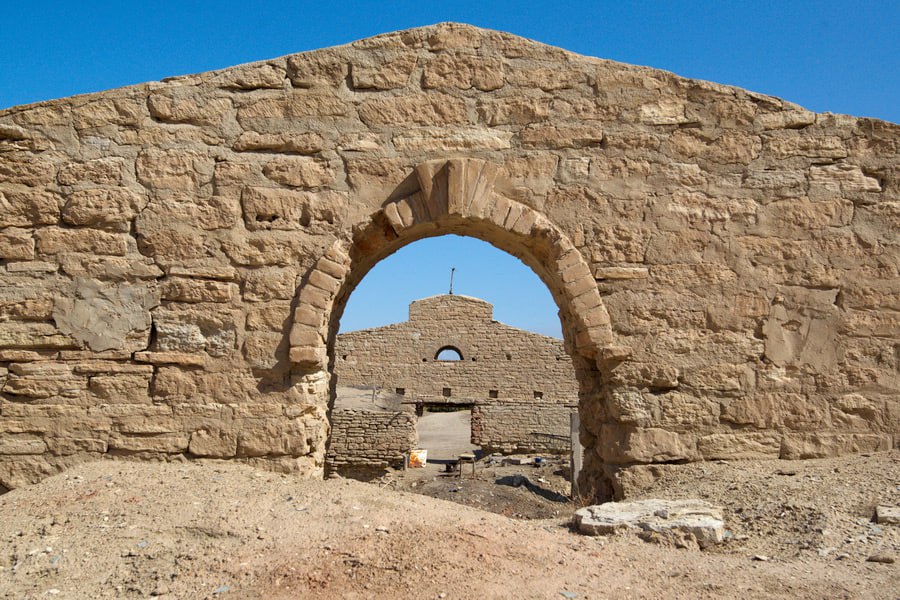
 These walls serve as a sad reminder of the once flourishing fishing industry on the Aral Sea. Occasionally, fishermen come here, setting off on old boats along a narrow canal into the depths of the lake.
These walls serve as a sad reminder of the once flourishing fishing industry on the Aral Sea. Occasionally, fishermen come here, setting off on old boats along a narrow canal into the depths of the lake.
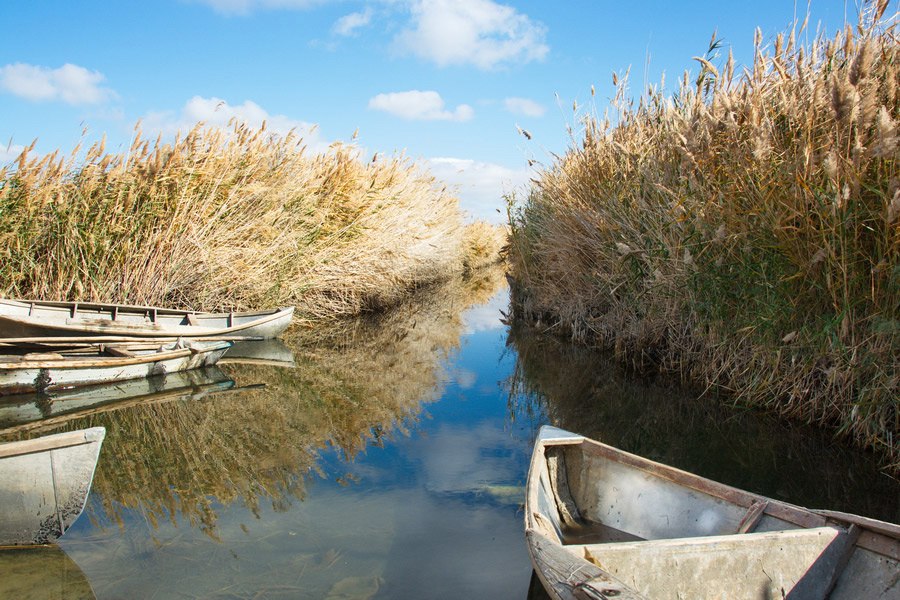 A visit to Lake Sudochie and the abandoned fishing village of Urga is part of many tour programs to the Aral Sea. Here, on the shores of the lake, tourists can enjoy the magnificent views that open up from the shores of the lake. Excursions to Lake Sudochie and the abandoned village of Urga provide a unique opportunity to understand the fragility of the ecosystem, making these trips particularly relevant in the context of modern environmental challenges.
A visit to Lake Sudochie and the abandoned fishing village of Urga is part of many tour programs to the Aral Sea. Here, on the shores of the lake, tourists can enjoy the magnificent views that open up from the shores of the lake. Excursions to Lake Sudochie and the abandoned village of Urga provide a unique opportunity to understand the fragility of the ecosystem, making these trips particularly relevant in the context of modern environmental challenges.
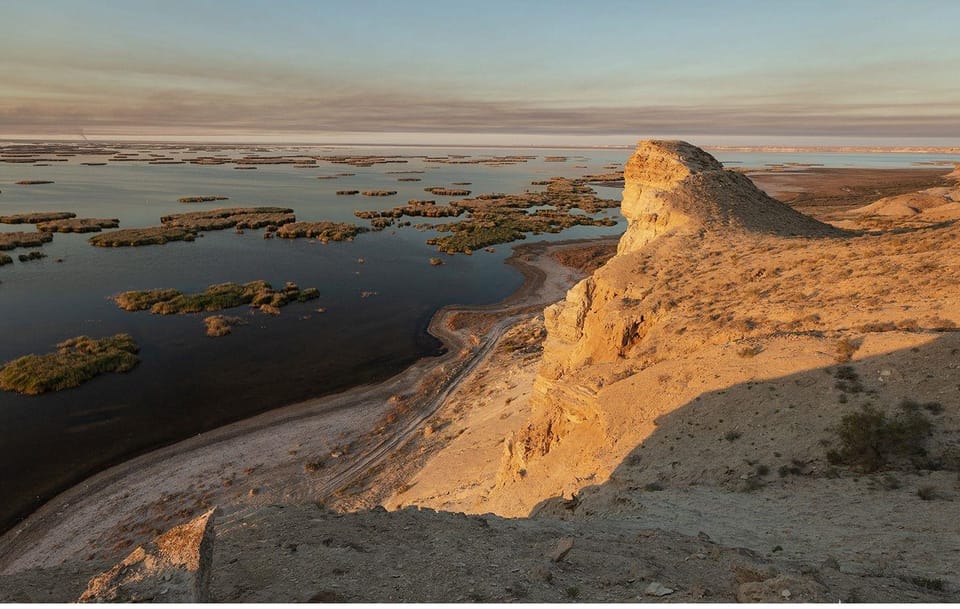 This is a place where time stands still, allowing visitors to think about the importance of nature conservation and pay tribute to the memory of those who once lived here. The ruined buildings of Urga, like silent guardians of the past, serve as a backdrop for reflection on the people who once inhabited these lands.
This is a place where time stands still, allowing visitors to think about the importance of nature conservation and pay tribute to the memory of those who once lived here. The ruined buildings of Urga, like silent guardians of the past, serve as a backdrop for reflection on the people who once inhabited these lands.
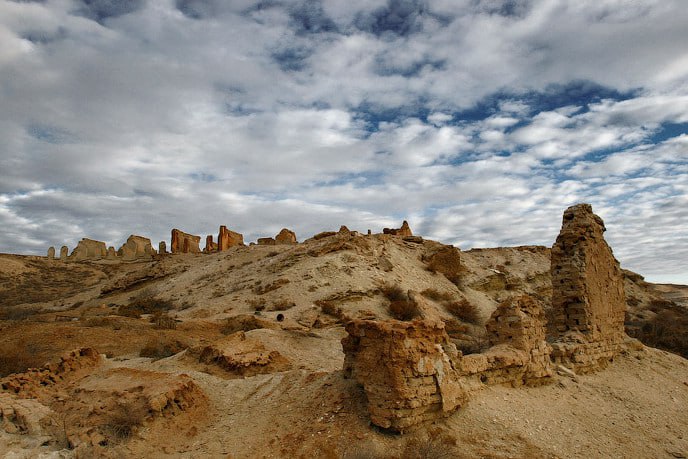 (photo by © meros.uz)
(photo by © meros.uz)
Every brick, every abandoned boat tells its own story, reminding us of a time that can never be reclaimed.
